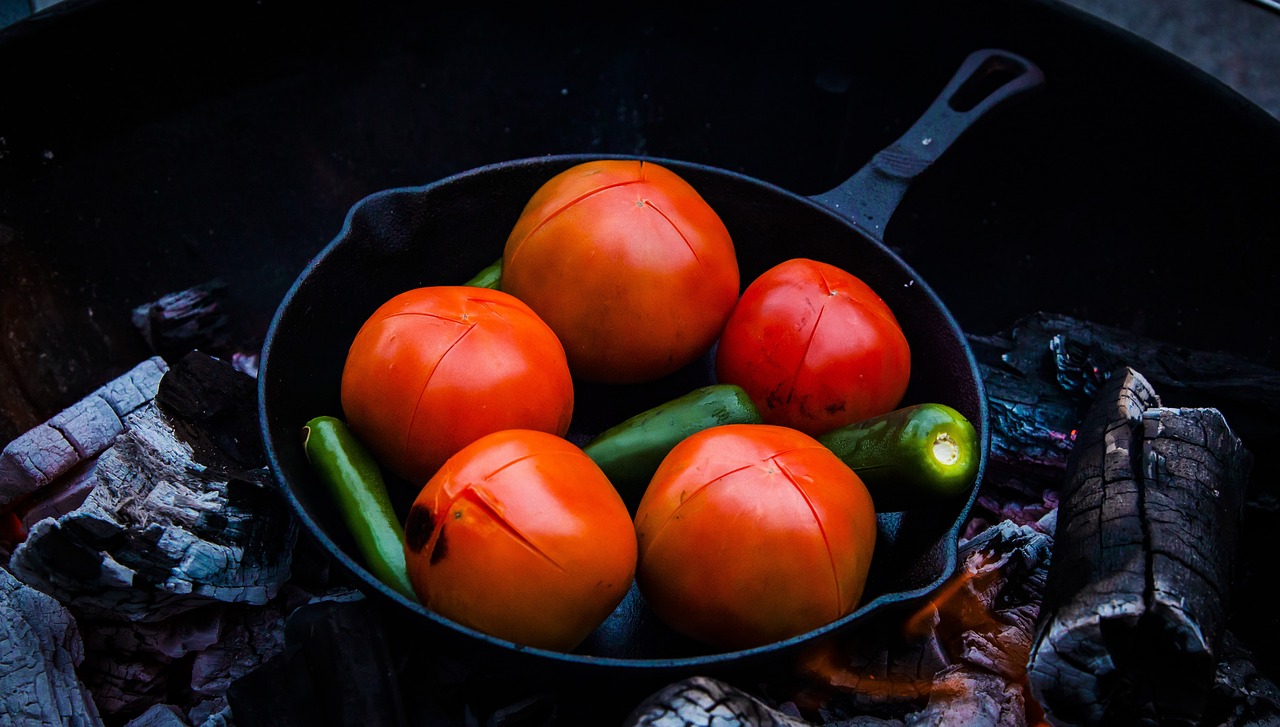Historically, cast iron cookware is very old. It was prevalent in ancient China, where cast iron pots and pans were crafted using traditional casting techniques. Cast iron cookware became more widespread in Europe during the Middle Ages, with evidence of cast iron pots and pans being used in various culinary practices.
Carbon steel cookware, like cast iron, has been used for centuries, though it gained popularity in the culinary world during the 20th century. Carbon steel is an alloy of iron and carbon, with a higher carbon content than stainless steel, giving it similar properties to cast iron but with some differences.
Lastly we can encounter cast iron pans which are fully coated in enamel. Enamel is a type of glassy coating that is applied to metal surface. This layer fully covers the cast iron which is in hearth of these pans and is used for even heat distribution.
Series about Pans
Choosing a right pan for your cooking is as much important as anything else. In these articles I will describe my learnings on this topic based on type of pan:
- Stainless Steel Pans
- Carbon & Cast Iron Pans
- Non-Stick Pans
Science related to pans:
- Leidenfrost effect
- Maillard reaction
Therefore we have three types of these pans:
- Cast Iron Pans
- Carbon Steel Pans
- Enamel Cast Iron Pans
Cast Iron and Carbon Steel
Iron pans do require higher maintenance. To achieve non-sticking on these pans we need to season them. This is done by coating pan in thin layer of vegetable oil and heating pan till oil polymerizes in to something we call “seasoning”. This layer also helps prevent rust and enhances the flavor of foods.
Iron pans can’t be put in to dishwasher. Abrasive dishwasher cleaner will remove seasoning and cause pan to immediately oxidate and form rust.
Both materials are reactive to acidic food. This will cause seasoning to break down in to food. Iron will leach to the food, which can alter the flavor of the dish. This can result in a slightly metallic taste or a change in the overall flavor profile of the food. It’s not recommended to use these pans for recipes which are heavy on acid.
Cast iron is most sought for outdoor cooking over open fire as it can whit-stand high temperatures and is very durable overall. Cast iron is experiencing huge comeback today, as it’s very conductive material which works great on modern induction stovetops.

Differences & Producers
Carbon steel tends to be more expensive, lighter in weight also reacting faster to temperature changes. Most reputable producer of carbon steel pans is De Buyer (France) or Matfer (USA).
Cast iron pans are relatively inexpensive. Their biggest disadvantage is heavier weight. They are usually slow in reaction to temperature adjustment. Most reputable producer of cast iron pans is Lodge (USA) or Staub (France).

Enamel Cast Iron

The enamel coating provides a smooth and non-porous cooking surface that is resistant to staining and odor absorption. This makes enamel-coated cast iron ideal for cooking acidic foods, such as tomatoes or wine-based sauces, without imparting off-flavors or reacting with the food.
The non-stick enamel surface is easy to clean and requires minimal maintenance. Unlike traditional cast iron, enamel-coated cast iron does not require seasoning and can be washed with mild soap and water.
Like traditional cast iron, enamel-coated cast iron retains and distributes heat evenly, ensuring consistent cooking results. It also retains heat well, allowing food to stay warm for longer periods after cooking. They are therefore perfect for braising or stewing meat.
Most reputable producer of cast iron pans is Le Creuset (France) or Staub (France).
Safety
Cast iron itself is not typically susceptible to pollution by heavy metals. Cast iron is primarily composed of iron and carbon, with small amounts of other elements like silicon, manganese, and sulfur. These components are generally not considered harmful heavy metals. However, contamination with heavy metals can occur if the cast iron is exposed externally to heavy metals.
For enamel coated pans, raw materials used in the production of enamel coatings, as well as the manufacturing process itself, can potentially introduce contaminants if not properly controlled.
Additionally, make sure to avoid using pans with damaged enamel coating. Damaged or deeply scratched enamel coating tends to chip and can get in to food which poses great health hazard.
To minimize the risk of heavy metal contamination when using iron cookware, it’s important to use cast iron cookware from reputable manufacturers.

3 comments / Add your comment below